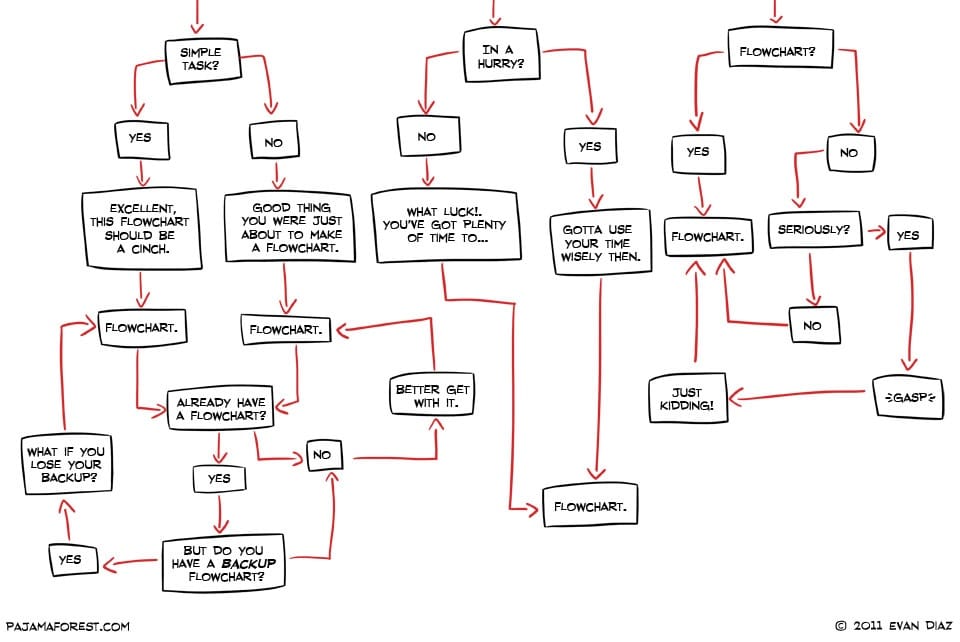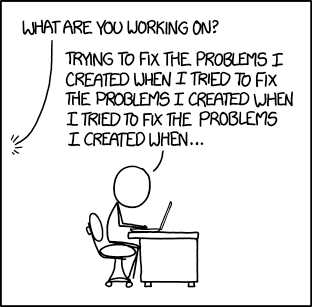Logic Programming loves Data
How to leverage logic programming to enhance data-driven development

In a previous post we have seen how datalog language - and consequently logic programming - can be convenient in the context of data querying and exploration.
We will now see how logic programming can be helpful in the context of data transformation. Let's first have a deeper look at logic programming concepts.
What-is Logic Programming ?
Logic programming is a programming paradigm that is based on formal logic. In logic programming, programs are written in the form of logical statements or rules, which define relationships and constraints between different entities.

Unlike other programming paradigms, such as functional programming and object-oriented programming, which focus on how to achieve a specific task, logic programming is concerned with representing and reasoning about knowledge.
Programs written in a logic programming language mainly consist of a set of facts, rules and queries.
Facts describe the problem data, while rules describe the relationships between the data. Queries are statements or questions posed to the system that express a goal or a condition that needs to be satisfied.
Facts:
- John is a parent of Jim
- John is a parent of Ann
- Mary is a parent of Jim
- Mary is a parent of Ann
- John is a male
- Mary is a female
Rules:
- A person is a father if they are a parent and male.
- A person is a mother if they are a parent and female.
- Two individuals are siblings if they share the same parent.
Queries:
- Is John the father of Jim? => yes
- Are Jim and Ann siblings? => yes
- Is Mary the mother of Jim? => yes
Logic programming is particularly suited to problems that can be represented as logical relationships. For example, logic programming can be used to solve inference, reasoning, and planning problems.
This makes it well-suited for applications that require a deep understanding of complex domains, such as natural language processing or expert systems.
Building Blocks
Here are the key features of the logic programming paradigm.
-
Declarative Style: Logic programming is declarative, meaning that you specify what you want to achieve rather than how to achieve it.
-
Logic Rules: Programs consist of a set of logical rules or clauses. These rules are expressed in the form of predicates and facts, which represent relationships between objects or conditions.
-
Pattern Matching: The evaluation of logical statements often involves pattern matching. The system matches the input against the logical rules to determine if they apply.
-
Knowledge Representation: Uses a formal language that is precise and unambiguous. This allows for clear and concise descriptions of complex relationships and concepts.
-
Reasoning and Inference: The interpreter can use the knowledge base to draw conclusions, solve problems, and answer queries. This makes it valuable for applications that require a deep understanding of data and the ability to make logical deductions.
-
Backtracking: Logic programming often involves a mechanism called backtracking. If a particular path of inference does not lead to a solution, the system can backtrack and explore alternative paths.
Application Domains
Here are some generic examples of how logic programming can be used:
- To represent knowledge about the real world, such as relationships between objects or properties of objects.
- To reason about this knowledge, for example to find solutions to problems or to draw conclusions.
- To generate code, for example to translate logical rules into programming instructions.

Here are some specific domains of application:
-
Artificial Intelligence: Logic programming is a fundamental building block of artificial intelligence (AI) techniques. It's used in various AI applications, including symbolic reasoning, machine learning, and knowledge engineering.
-
Natural Language Processing: Logic programming is used in natural language processing (NLP) applications to analyze and understand human language. It helps in tasks like machine translation, text summarization, and question answering.
-
Expert Systems: Logic programming plays a crucial role in building expert systems, which are computer programs that emulate human expertise in a specific domain. It helps in representing domain knowledge, reasoning about complex problems, and providing expert advice.
-
Database Management Systems: Logic programming is integrated into some database management systems (DBMS) to provide advanced query capabilities and knowledge-based features. It helps in handling complex queries, managing meta-data, and performing data mining tasks.
-
Verification and Validation: Logic programming is used in verification and validation of data consistency to ensure its correctness and adherence to specifications. It helps in formalizing requirements, and identifying potential errors.
When to use logic programming ?
Logic programming has several advantages that it may be advisable to exploit in certain situations.
Being declarative means that logic programs focus on what the program should do, rather than how it should do it, making them easier to understand, maintain, and modify.
Furthermore, logic programs are expressive, allowing them to represent complex and abstract concepts in a concise and natural way.
Additionally, logic programs are flexible and can accommodate different modes of execution, such as forward chaining or backward chaining which are especially useful in rules-engines.

Data-driven architecture
The Data-Driven approach provides several benefits that contribute to the flexibility, adaptability, and efficiency of a system. However it often poses problems of efficiency in terms of developments as structures become more complex and the diversity of models increases.
Working with complex data structures is like navigating a dense jungle: the built-in tools are your machete, but youll often need a bit of hacking and slashing to find your way through.
Logic programming can significantly enhance data-driven architectures by providing a declarative and knowledge-driven approach to data processing and analysis. Its ability to represent complex relationships and perform logical reasoning can help extracting meaningful information from vast amounts of data.

Logic programming offers a powerful and versatile approach that makes it a valuable tool for extracting information from data and enabling knowledge-driven decision-making.
Synergy with functional programming
We have seen logic programming offers a powerful approach for tasks that require extensive knowledge representation, reasoning, and inference.
On its end, the functional programming emphasizes the concept of pure functions, which are functions that take input values and produce output values without any side effects. This means that a function's output depends solely on its input, and it does not modify any external state or data.
-
Immutability: Data is treated as immutable, meaning it cannot be changed once created. This ensures data integrity and simplifies reasoning about program behavior.
-
Expression-oriented: Programs are composed of expressions that evaluate to values, rather than statements that modify state. This emphasizes the declarative nature of functional programming.
-
Higher-order functions: Functions can take other functions as arguments or return functions as results. This allows for powerful abstractions and concise code.
Functional programming and logic programming are both declarative programming paradigms that offer unique strengths and applications.
| Feature | Functional Programming | Logic Programming |
|---|---|---|
| Program Structure | Functions as the primary building blocks | Facts and rules as the foundation |
| Data Paradigm | Immutable data | Mutable data |
| Programming Style | Declarative and expression-oriented | Declarative and knowledge-driven |
| Strengths | Modularity, predictability, testability | Knowledge representation, reasoning, inference |
| Applications | Web development, data processing | Natural language processing, expert systems |
Taking the best of both worlds
While functional programming and logic programming are two distinct programming paradigms, there are areas of overlap and potential synergies between them.
-
Declarative Style: Functional Programming emphasizes a declarative style, where programs are written as a series of mathematical-like expressions. Logic Programming also follows a declarative style, where programs describe relationships and constraints rather than a sequence of steps.
-
Expressiveness: Leveraging the expressiveness of both paradigms can lead to more concise and expressive programs, especially in domains involving complex relationships and constraints.
Despite the fact functional and logic programming have distinct design principles, their combination or integration can lead to powerful and expressive programming models.
Therefore, librairies and frameworks of functional languages that incorporate features from logic paradigm (pattern-matching, logic-rules) such as datascript which is based on datalog and prolog principles, continue to be developed and may be very good options to consider.
A closer look to Clojure Libraries
Let's now dive into implementations in the clojure ecosystem
See below 3 libraries which incorporates features of logic programming. Each of them offers a different level of abstraction.
1. Core.logic
A low-level logic programming library for Clojure & ClojureScript. core.logic offers Prolog-like relational programming, constraint logic programming, and nominal logic programming for Clojure.
(run* [q]
(membero q [1 2 3])
(membero q [2 3 4]))
2. Meander
Meander is a declarative data manipulation toolset created as a library in Clojure. Borrowing ideas from logic programming and term rewriting, Meander allows declarative descriptions of arbitrarily complex data; enabling you to search, match, remember, join, and transform any part of your data directly.
(defn favorite-food-info [foods-by-name user]
(m/match {:user user
:foods-by-name foods-by-name}
{:user
{:name ?name
:favorite-food {:name ?food}}
:foods-by-name {?food {:popularity ?popularity
:calories ?calories}}}
{:name ?name
:favorite {:food ?food
:popularity ?popularity
:calories ?calories}}))
3. Clara rules
Clara-rules is a forward-chaining rules engine written in Clojure(Script) with Java interoperability. It aims to simplify code with a developer-centric approach to expert systems. It implements an higher order machine.
;; Fact
[?person <- Person (= first-name "Alice") (= ?last-name last-name)]
;; rule
(defrule is-older-than
[Person (= ?name1 name) (= ?age1 age)]
[Person (= ?name2 name) (= ?age2 age)]
[:test (> ?age1 ?age2)]
=>
(println (str ?name1 "is older than" ?name2)))
;; query
(defquery get-promotions
"Query to find promotions for the purchase."
[?type]
[?promotion <- Promotion (= ?type type)])
These different implementations make it possible to incorporate principles of logic programming into more global projects based on versatile and commonly used programming languages.
A Real-Life scenario
Let's now address the question of using logic programming concepts in a concrete use-case.
In a previous article I discussed the fact I developed a software whose main purpose is to transform complex data. The Clojure language allowed me to respond to the overall complexity of the solution.
However, as the complexity of the software increased, I increasingly felt the need to represent all the rules for managing transformations (several hundred to date) as well as business rules for data validation, with a desire to express these in an understandable and maintainable format.
Until then I used transformation functions that include if-conditionals to apply changes only on certains conditions such as matching ids ; as follows:
(defn assemble [a b]
(if (and (= (:id a) (:id b)) (:weight b) (:weight a)) ;; predicates
(update a :weight + (:weight b)) ;; transformation
a)) ;; else
(assemble {:id 123 :weight 100} {:id 123 :weight 25}) ;; => {:id 123, :weight 125}
(assemble {:id 123 :weight 100} {:id 456 :weight 25}) ;; => {:id 123, :weight 100}
The approach based on the Meander library allows to pass all the business logic in more a declarative form, for all the rules for pattern-matching and transformation.
(require '[meander.epsilon :as m])
(defn assemble [a b]
(m/match
{:a a :b b} ;; facts
{:a {:id ?id :weight ?weight-a}
:b {:id ?id :weight ?weight-b}} ;; matching + predicate
{:id ?id :weight (+ ?weight-a ?weight-b)} ;; transformation
_ a ;; else
))
(assemble {:id 123 :weight 100} {:id 123 :weight 25}) ;; => {:id 123, :weight 125}
(assemble {:id 123 :weight 100} {:id 456 :weight 25}) ;; => {:id 123, :weight 100}
In addition, the expressive approach of meander makes it possible to extract the definiton of the rule in the form of a data structure; which, once isolated from the rest of the code, represents a kind of predicate-as-data for declaring all the business logic of the solution.
Let's go a step further and try see how to use a domain-specific language (DSL) to express rules for the same operations.
(require '[meander.epsilon :as m])
;; facts
(def part-a {:id 123 :weight 100})
(def part-b {:id 123 :weight 25})
;; rules
(defn transform [expression]
(m/match expression
[:assemble {:id ?id :weight ?weight-a} {:id ?id :weight ?weight-b}]
{:id ?id :weight (+ ?weight-a ?weight-b)}
[:substract {:id ?id :weight ?weight-a} {:id ?id :weight ?weight-b}]
{:id ?id :weight (- ?weight-a ?weight-b)}
[:heaviest {:id ?id :weight ?weight-a} {:id ?id :weight ?weight-b}]
{:id ?id :weight (max ?weight-a ?weight-b)}
_
expression))
;; queries
(transform [:assemble part-a part-b]) ;; => {:id 123, :weight 125}
(transform [:substract part-a part-b]) ;; => {:id 123, :weight 75}
(transform [:heaviest part-a part-b]) ;; => {:id 123, :weight: 100}
(transform [:undef part-a part-b]) ;; => [:undef {:id 123, :weight 100} {:id 123, :weight 25}]
In summary, today I take advantage of the joint use of the native functionalities of Clojure and some features taken from the logical programming paradigm ; The best of both worlds.
Caveats & Conclusion
While logic programming offers a unique and powerful approach to problem-solving, it is not without its limitations and challenges. Here are some of the caveats of logic programming that should be considered when evaluating its suitability for a specific project:
-
Computational Efficiency: Logic programming can be computationally expensive, especially for complex problems with large knowledge bases. The search for solutions through logical inference can become time-consuming, particularly in cases where multiple solutions exist or when dealing with extensive data sets.
-
Non-determinism: Logic programming is an inherently non-deterministic programming paradigm, meaning that the system is designed to find all possible solutions rather than a single deterministic result. This non-determinism can be difficult to control and may lead to unpredictable behavior, especially in large-scale applications.
-
Debugging Complexity: Debugging logic programs can be challenging due to their declarative nature and the non-deterministic execution flow. Identifying the source of errors or unexpected results can be time-consuming and may require a deep understanding of the underlying logic and search strategies.

Despite these caveats, logic programming remains a valuable tool for a variety of applications, particularly those that require knowledge representation.
Careful consideration of these limitations and understanding the strengths of logic programming are crucial for making informed decisions about its suitability for specific projects.
Logic programming is not a silver bullet. But it offers a range of very interesting possibilities if used sparingly.
To date, the timely use of functionalities taken from logic programming has made it possible to considerably improve the maintainability of my code in production.
I will therefore continue to rely on this approach for future developments.
RESOURCES
Here are some of the readings that helped me write this post.
Articles
- What are the main characteristics and examples of logic programming paradigms?
- Transforming data with malli and meander
- Meander for Practical Data Transformation
- Data Transformation: Types, Process, Benefits & Definition
- Clara's Approach
- Difference Between Functional and Logical Programming
- The Working Hipster's Clojure
Videos
- Logic programming with clara-rules - William Parker
- William Byrd on "The Most Beautiful Program Ever Written" [PWL NYC]
- Meander: declarative explorations at the limits of fp
- Introduction to Logic Programming and Open World Reasoning

